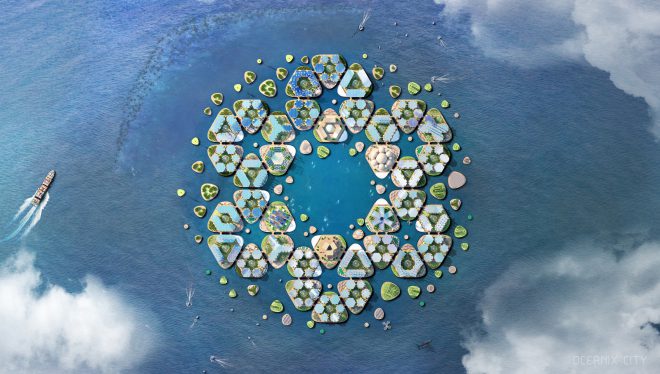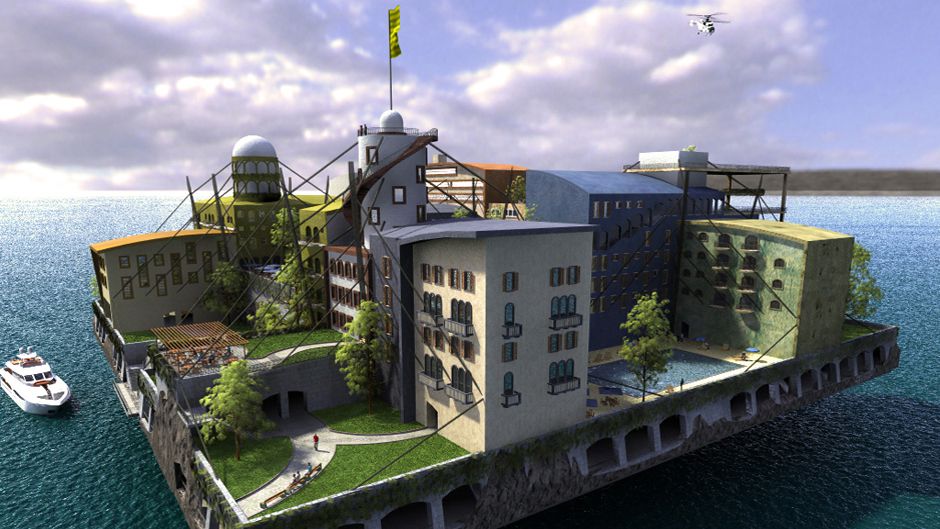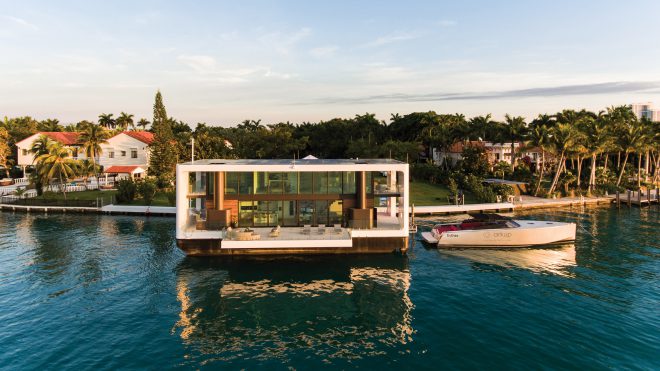 When you think of who inhabits the sea, don’t think of people, you think of fishes. Turtles, dolphins, jellyfish, whales. In Dubai and Oman they have built cities into the sea on fake islands and jetties. But the people at the Seasteading Institute argue that the ocean can become home to sustainable new societies in cities that float.
When you think of who inhabits the sea, don’t think of people, you think of fishes. Turtles, dolphins, jellyfish, whales. In Dubai and Oman they have built cities into the sea on fake islands and jetties. But the people at the Seasteading Institute argue that the ocean can become home to sustainable new societies in cities that float.

Autonomous cities that are free from political ties to existing governments. They can welcome anyone from anywhere. If you are looking for an Iranian floating city, check here.
Seasteaders, funded by Bitcoin profits claim that society is on the brink of collapse, and that existing governments no longer serve their citizens. But since all the planet’s habitable land is claimed by governing countries, and humans are still far from colonizing outer space, the problem is finding a place on Earth for this movement.
The answer is, the ocean. Homesteading on the sea, free of nationality and government rule. Utopia on the water.

In 2008, Google software engineer Patri Friedman persuaded PayPal billionaire Peter Thiel to co-found the Seasteading Institute, a visionary project whose blueprints sketch self-sustaining societies free of dysfunctional government and bureaucracy. The new societies’ resources would erase world hunger; eliminate air and ocean pollution; cure illness through independent research, and stop war.

András Gyõrfi for The Seasteading Institute
Stop taxes, too.
In this libertarian utopia, tethered artificial islands would be self-sufficient homes, growing produce hydroponically, making their own electricity and handling their own wastewater. Needs such as taking out the trash and recycling would be served by drones, as would deliveries of food, mail, and medical supplies.
Each island would be its own society, governed by its own rules. If you don’t like your present neighbors, you can move your home to where it suits you better.
While these things are pleasant to think of, questions remain. How could the average Joe or Josephine afford to build a home sustained on a platform in the ocean? It would cost millions of dollars.

Family homes supported by spars in the sea.
Where would wastewater go? It can hardly be shipped back to land. Although the institute’s plans include aquaculture and nurturing marine life, how can the waste of hundreds, if not the visionary thousands of seasteaders, not pollute the sea? Consideration must be given to eliminating Covid-19 from wastewater; does the seasteading movement have a plan for that?
The original plan was for seasteads to exist on the high seas, out of national boundaries. That is, 200 nautical miles, or 370 km from shore. At that distance from land, ships aren’t subject to the laws of any sovereign state unless they are sailing under a country’s flag. Pirate radio stations have done that off the coast of Israel.
A seastead on the high seas could feasibly establish free new governance according to the ideals of its founding members.
But seasteaders could never be totally independent of land resources. At least, people would simply want to leave the sea once in a while, not to mention dealing with special needs and medical emergencies. And it would cost thousands of dollars in fuel simply to fly from 200 miles from the sea to land and back again.
Unregulated innovation?
There have already been seasteading experiments. Bitcoin tycoon Chad Elwartowski and his partner, Supranee Thepdet, built a maritime cabin inside the territorial waters of Thailand, and filmed themselves drinking champagne to celebrate their seasteading home. “To all those out there who want to control people’s lives through force, here’s my big finger to you,” Elwartowski boasted.

The couple were forced to flee and went into hiding when the Thai government charged them with violating national sovereignty, the penalty for which in Thailand is death. Escaping the Thai naval police by minutes, the couple are said to be working on a new plan with the government of Panama.
It became evident that a floating city must have formal agreements with the governments whose waters it inhabits. But countries have been wary of partnering with the institute.
The government of French Polynesia initially agreed to allow a pilot seasteading project in Tahiti in 2017, but Tahitian public concerns about pollution and social disruption brought the project to an end in 2018.
Back in 2011 we wrote about a floating golf club for the Maldives. And earlier this year about a solar-powered floating home which can be moored – for the seasteaders? It’s really more like a houseboat with a vision.

The original founders of the Seaside Institute have stepped back to some degree. Friedman, whose reputation rests heavily on the fact that Nobel Prize-winning economist Milton Friedman was his grandfather, remains chairman, but has turned his attention to new land-based cities. Thiel hasn’t donated funds since 2014.
YouTube videos narrated by Seasteading Institute president Joe Quirk urge viewers to participate in the great dream, and naturally, to donate.
:: The Seasteading Institute website



